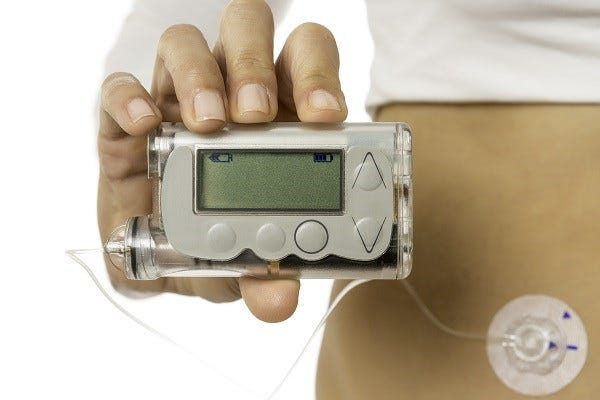$1.4M Grant Boosts Rescue Kits to Help Diabetics
 Topp says the glucagon technology could
Topp says the glucagon technology could
Subscriber Benefit
As a subscriber you can listen to articles at work, in the car, or while you work out. Subscribe NowIt isn’t easy doing chemistry in a panicked state, but that’s exactly what a person must accomplish when using current hypoglycemia rescue kits, says Dr. Elizabeth Topp, a Purdue University industrial and physical pharmacy professor. Hypoglycemia can come on quick, and standard rescue kits involve injecting liquid into a small vial filled with powder, swirling to dissolve it, then loading it back into the syringe for injection. But a team of Purdue collaborators, now boosted by a $1.4 million grant, believes it’s developed a solution that even the toughest critics describe as “brilliant.”
“You can imagine, if you’re a parent or caregiver for a high school kid playing volleyball who’s diabetic and now passed out, the last thing you want to do is all this chemistry before you inject this life-saving drug into the patient,” says Topp. “Meanwhile, you’re reading tiny fine-print instructions to tell you how to do this properly. You’d be asking yourself, ‘Why can’t I have an EpiPen?’”
The answer is because the chemistry is complicated. People with diabetes experience hypoglycemia when there’s too much insulin and not enough sugar (glucose) in the blood; the condition can lead to coma or even death. Glucagon is the critical substance loaded in rescue kits that’s injected to counteract hypoglycemia, but it’s not stable in solution (liquid form), and therefore can’t be pre-loaded into a pen-like device.
Topp says glucagon “sticks to itself,” forming fibers, and won’t increase blood sugar when it’s comprised of these fibers. A Purdue graduate student came up with the idea to phosphorylate glucagon. Phosphate has “a big negative charge” that repels and prevents the fibers from forming. This adjustment makes the glucagon shelf-stable and able to be pre-mixed in liquid, opening the door to a pen-like rescue device for hypoglycemia.
“It’s not glucagon when it’s in the pen, but once administered to the patient, the enzymes in the patient’s body will convert it back to glucagon,” says Topp. “For a lot of people, that’s a big deal to know they’re not getting some chemically-modified glucagon; ultimately, they’re getting actual glucagon. A lot of diabetic patients like the idea that it’s natural. In a sense, it’s the same hormone your body would make; it’s not an altered one.”
Topp says the student’s suggestion led to her “epiphany moment that is the result of 30 years-worth of experience that said, ‘This is actually going to work.’” But Topp lacked the business know-how to commercialize the discovery and partnered with Indianapolis-based Monon Bioventures, describing the company as her “dream team.” Monon’s roster includes Eli Lilly and Co. alumni with expertise in developing drugs in the diabetes space.
“We’ve got this somewhat hidden gem in Indiana, which is the [Purdue] College of Pharmacy, and in particular, industrial and physical pharmacy,” says Monon Bioventures Chief Executive Officer Joe Trebley. “And we’re also pulling in so much of this knowledge and experience created by Lilly [talent] over the years. So this is like a match made in Indiana heaven.”
Recognizing the solid science, the National Institutes of Health recently awarded Monon Bioventures a $1.4 million Small Business Innovation Research grant to collaborate with Topp and further develop the hypoglycemia rescue kits. The discovery, which one grant reviewer called “brilliant,” also has fast-track designation, which speeds the commercialization process and “is pretty competitive and pretty unusual,” says Topp.
“NIH reviewers don’t use the word ‘brilliant.’ They use much more derogatory terms, generally, in reviewing grant applications,” laughs Topp. “To see a term that positive felt like, ‘Wow, they liked it.’”
Monon Bioventures says the NIH grant will fund studies to select the “very best compound” to take to the U.S. Food and Drug Administration, “and then we’ll be off to the races.”
“People tell me stories that have really touched my heart about family and friends with diabetes who really need this,” says Topp. “I’m a lab rat and a lab nerd; I never even dreamed that something that would come out of my lab would have the potential to improve lives for lots of people. I’m really excited about the potential to make life better for patients with diabetes and their families.”
Topp says the expertise at Monon Bioventures, including Chief Science Officer Mark Heiman (former chief science officer for Lilly Obesity), is the “dream team” to commercialize her technology.
Topp says her team’s glucagon technology could, ultimately, revolutionize insulin pumps.
Trebley describes the likely path to market for the hypoglycemia rescue kits.

